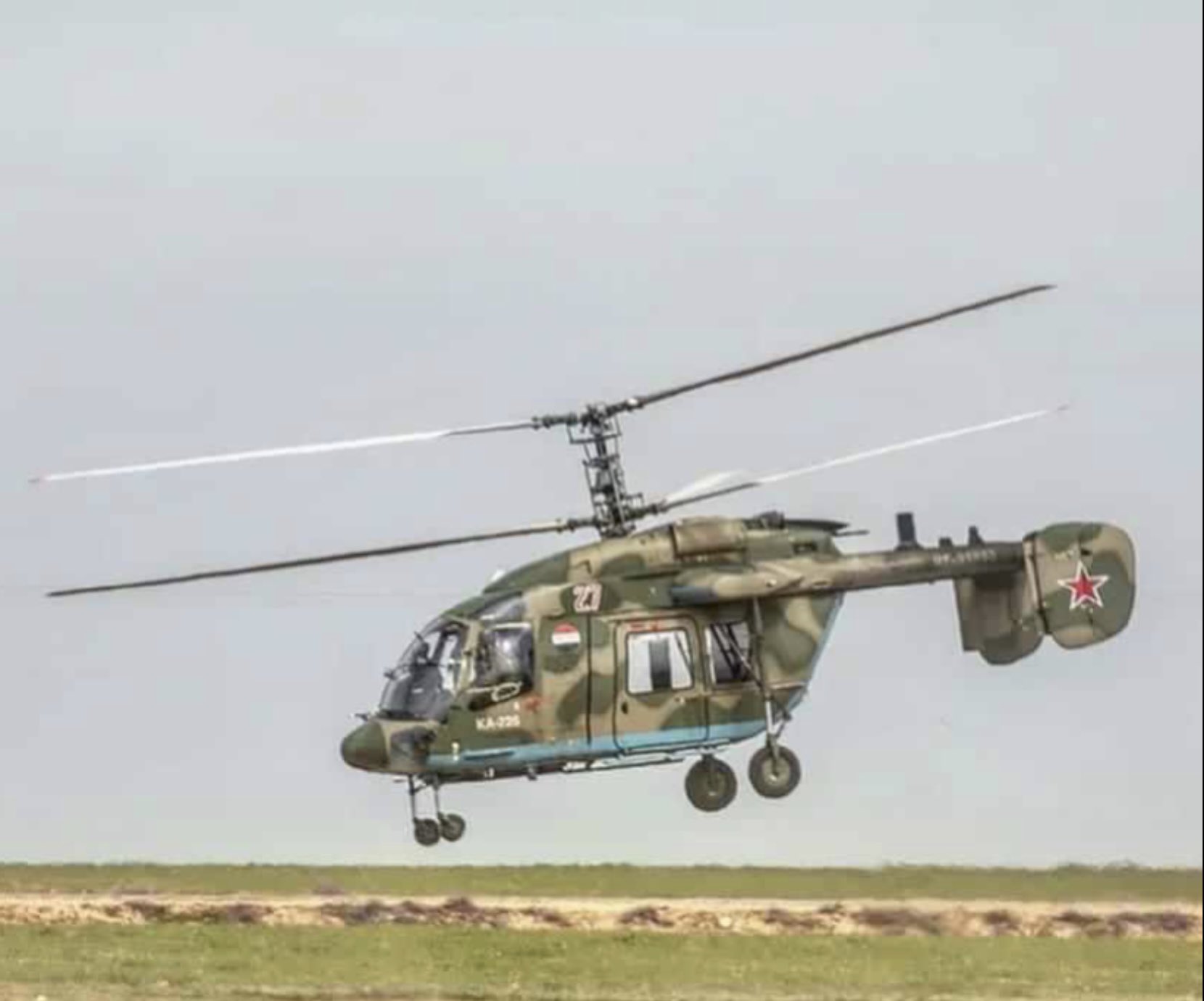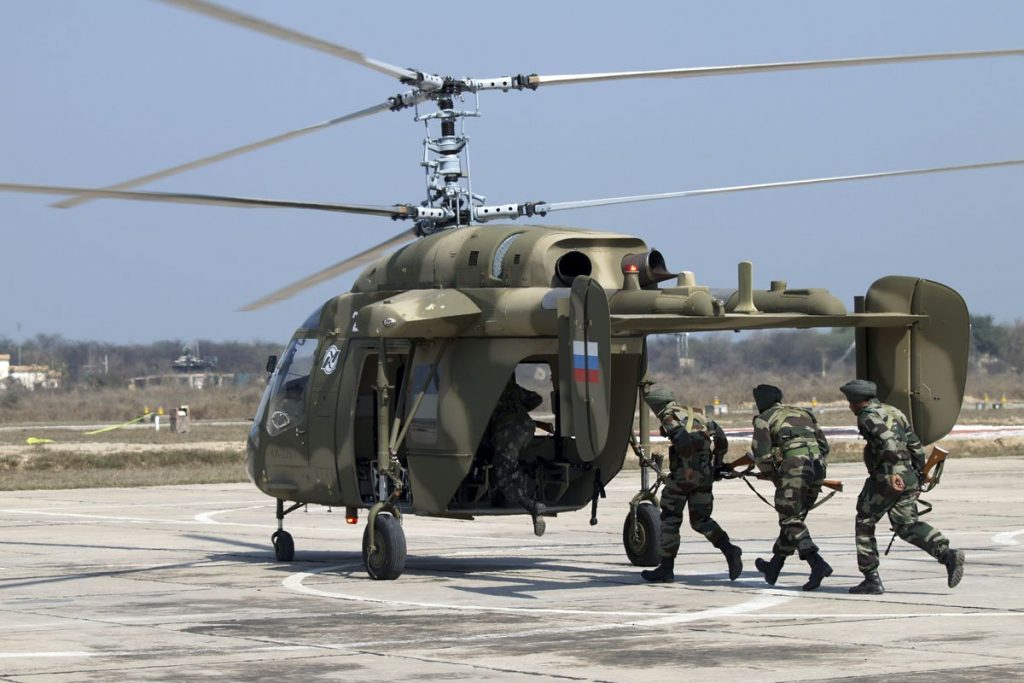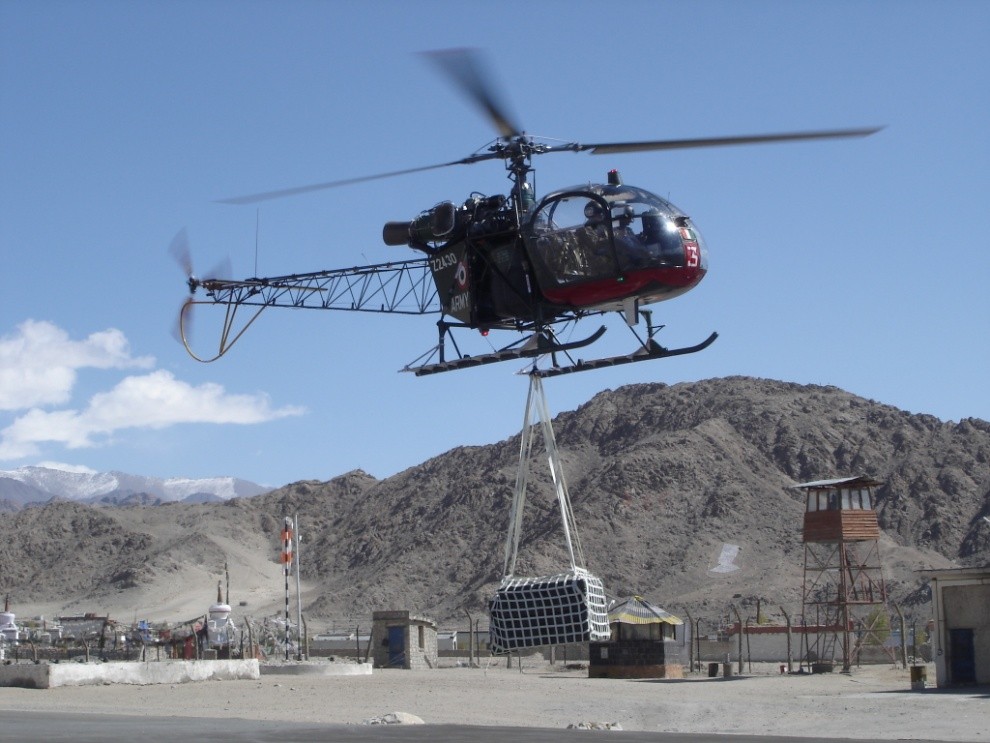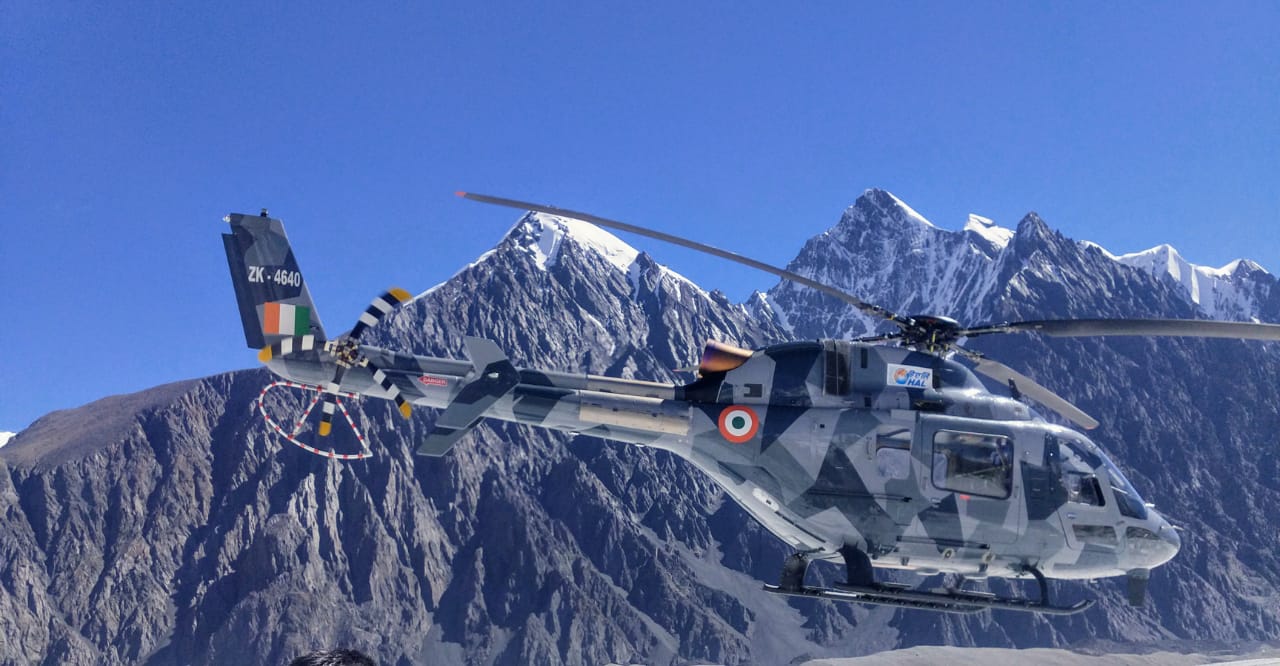Indian Army is looking to fast-track the acquisition of the Russian Ka-226-T helicopters amid border tensions with China in Ladakh.
With the older Chetak and Cheetah helicopters at the fag-end of their technical life, India’s chopper arsenal needs urgent upgradation.
The Indian armed forces are set to request the government to acquire “a minimum inescapable quantity” of the Russian Kamov-226-T helicopters in a fly-away condition, reported The Times of India.
The single-engine Cheetah and Chetak helicopters are in a dire need of replacement. Officials told the Indian daily that operational availability of Cheetahs/Chetaks along the northern borders with China and the Siachen glacier-Saltoro Ridge region with Pakistan is down to just 50%.
The said technical life of these choppers will probably last until 2023. And hence, the forces desperately need new helicopters.
Is India Finally Playing The Tibet Card; Using The Dalai Lama As A ‘Strategic Weapon’ Against China?
India’s Ka-226-T Deal
The Indian armed forces have been pushing for the acquisition of new light utility helicopters (LUHs) for the past two decades. In 2015, India signed an inter-governmental agreement with Russia for the acquisition of 200 Kamov Ka-226-T helicopters worth $1billion.

Out of the total 200 helicopters, 60 were to be imported directly while the remaining were to be manufactured indigenously at a joint facility at Tumakuru in Karnataka.
However, the acquisition is still stuck due to disagreements on the indigenous content, as The EurAsian Times had earlier reported. The homegrown equipment to be manufactured is between 27 to 33 percent, under the full Transfer of Technology (ToT).
R Madhavan, chairman of the state-owned Hindustan Aeronautics Limited (HAL), had said, “In Ka-226T when we talk of 70% indigenous content, it is not the same as the Light Combat Aircraft (LCA) 52%. The 70% is of the Russian content. Engine from Safran and avionics from other countries are not accounted for in this. Balance is what we are looking and from there 70% is taken. Taking the whole helicopter, the indigenous content is about 27-33 %.”
Afghanistan Calls On India, Russia & China To Help Fight Terrorism In The War-Torn Country
The Russian proposal had reportedly mentioned that the localization plan was to be managed in four phases. First 3.3% indigenization for 35 helicopters, second around 15% for the next 25 helicopters, 35% for the third phase of the next 30 helicopters, and accounting 62.4% indigenization in the last phase for the 50 helicopters.
The Kamov-226-T is a light, twin-engine multi-role helicopter, manufactured by the Kumertau Aviation Enterprise, Russia. It can perform surveillance, reconnaissance, search, and rescue (SAR) missions, as well as transporting cargo and troops. The military version has been specifically designed to operate in high-altitude terrains.

The Kamov-226-T is equipped with a high-visibility nose, cabin design, and a new rotor system. It has been fitted with a new transmission system and Kamov coaxial rotor system, comprising three upper rotor blades and a set of three lower rotor blades.
The new rotor system diminishes the need for a tail rotor, enabling landings and take-offs from smaller sites. The helicopter can carry a cargo weighing 1,200 kg and another 1,500 kg on an external sling. It can fly at a maximum speed of 250kmph with a cruise speed of 220 kmph.
Cheetahs & Chetaks
The Cheetah is a five-seater multi-role, highly maneuverable helicopter, which holds the world record in high-altitude flying among all categories of helicopters. Identical to the Aerospatiale SA 315 B Lama helicopter of France, HAL first signed an agreement for the helicopter in 1970.
It is equipped with the Artouste-III B turbo-shaft engine and is capable of conducting observation, surveillance, and rescue operations in high-altitude areas. The helicopter is 12.91 m long, 2.38 m wide, and 3.09 m high. It has a cruise speed of 192 kmph.
Meet The Cheetah-Hearted Indian Air Force Pilot Who Flew Her Cheetahs From LOC to Bollywood
In the past decades, HAL has manufactured and sold more than 275 Cheetah helicopters for service in India and abroad.
The Chetak is a two-ton class, seven-seater, multi-role, multi-purpose helicopter. The Helicopter Division of HAL, first manufactured the Chetak in 1962, after an agreement with former Eurocopter, France, (presently Airbus). The first Chetak was acquired in a ‘Fly Away’ condition in 1965.

It is equipped with an Artouste -III B turbo-shaft engine, and the helicopter can conduct search and rescue (SAR) operations, aerial survey and patrolling, emergency medical services as well as cargo and material transport.
The Chetak is 12.84 m long, 2.59 m wide and 2.97 m high. It can carry two crew members and five troops and can fly at a speed of 185 kmph.
For decades, the Cheetah and Chetak helicopters have been used by the Indian armed forces for various purposes. However, after decades of service the choppers are facing problems with regards to serviceability and serious questions have been raised on their flight-worthiness.
The helicopters have been involved in a string of accidents and fatal crashes.
HAL’s Light Helicopter
The Indian Army desperately needs new light utility helicopters (LUHs) for reconnaissance as well as sustenance of troops in forward areas.
With the Cheetah and Chetak helicopters nearing the end of their technical life, the armed forces had urged the government to fast-track ‘Make-in-India’ projects to meet the requirements of the armed forces.
Accordingly, the HAL developed its own LUH, which cleared extensive tests last year, reported The EurAsian Times. It is expected that the LUH will complement the work of the Russian Kamov-226-T choppers.
The HAL helicopter underwent rigorous trials including envelope expansion, performance and flying technicalities at the high altitudes of Leh.
It was reported that the LUH took off from Leh and further demonstrated its hot and high hover performance at Daulat Beg Oldie (DBO) and Advanced Landing Ground (ALG) at 5000 MAMSL (height above mean sea level).
The LUH is equipped with a single Shakti -1U turboshaft engine.

Expected to replace the current Cheetah and Chetak helicopter fleets, the LUH was also tested on their payload capacity in the world’s highest battlefield – the Siachen glaciers. At the trial, the helicopters were landed at the highest helipads of Amar and Sonam.
Given the urgent need in view of threats from both China and Pakistan, the armed forces want the government to fast-track the acquisition of the Russian helicopters. Officials told The Times of India that India should import a certain number of Ka-226-Ts on a fast-track basis.
They are of the view that buying all the 200 helicopters in one go would make India dependent on the Russians for spares and maintenance. Hence, buying a limited number of choppers would address both operational and cost issues simultaneously.
Read More
- Watch: The Ultimate Dogfight Between US & Russian Fighter Jets Over A ‘Top-Secret’ Air Base In Nevada
- Why India’s Ladakh Region Is Crucial For China’s Rise As An Economic Super-Power?




